Way up on the North Coast 500, you’ll find the Ulbster Arms Hotel The perfect haven in Scotland for a birdwatching holiday! Snuggle up at the luxury Ulbster Arms Hotel for a fantastic nights sleep, great food and epic access to birding in Scotland.
In our wee Highland hotel you can enjoy epic scenery, dramatic coastlines and some of the best Scottish bird sightings. From seabirds along the rugged coast cliffs and boat rides up close to woodland birds in the forests. Enjoy a vast variety of birdlife to spot during your holidays to Caithness and the NC500. You can even take a ferry to Orkney or enjoy rib boat rides around the Duncansby stacks to enjoy birds nesting.
Local birdwatching spots near Thurso
Caithness is an ideal base for birding holidays, with many birdwatching hotspots nearby. Pop along to the spectacular Duncansby stacks, Noss Head, Staxigoe and Rumster Forest, all great places to birdwatch and see a wide variety of bird species. Additionally, Dunnet Head Nature Reserve is closeby. This peninsula in Caithness is the most northerly point of mainland Britain and offers amazing 360-degree views.
Birds to look out for on the North Coast 500
During your birding holiday with us in the stunning landscapes of Caithness, keep an eye out for some of our favourite bird species, ranging from iconic coastal seabirds to elusive moorland dwellers. Whether you’re a seasoned birder or just beginning to explore the joys of birdwatching, these remarkable species are sure to make your visit unforgettable.
Golden Eagles in Caithness
This huge bird of prey is an icon of Scotland. The golden eagle can be in Caithness in the more remote areas. Come to the far north to watch these magnificent birds. Watch them soaring high above mountains and moorlands. We also have a breeding pair of white-tailed eagles in our local Highland woodlands. These magnificent birds are thought to be the first successful breeding pair in the area for almost 100 years! They nesting in Sitka spruce trees within a windblown area of lodgepole pine.
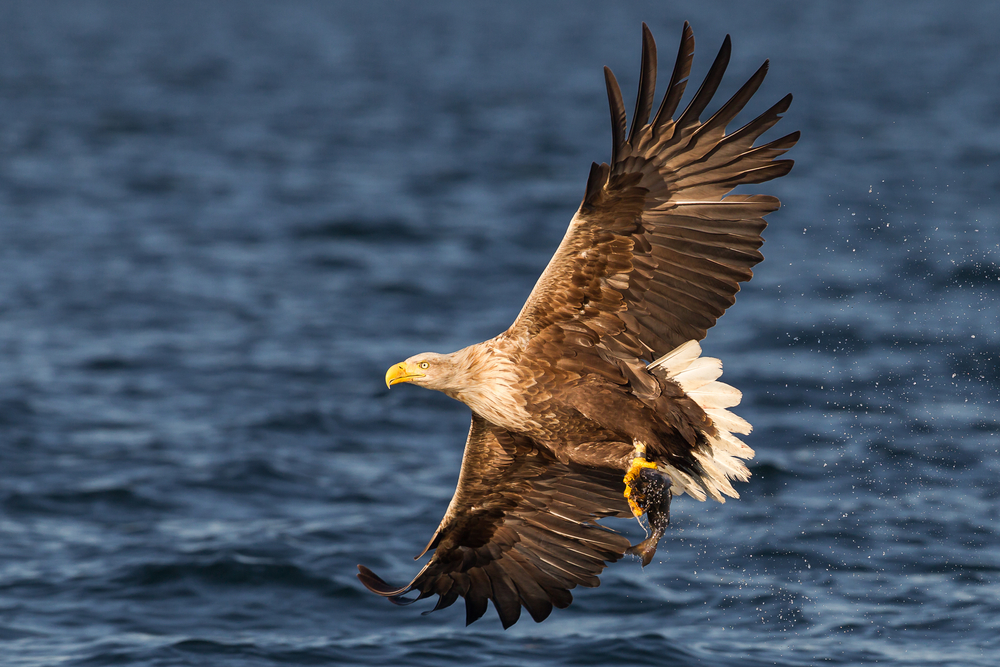
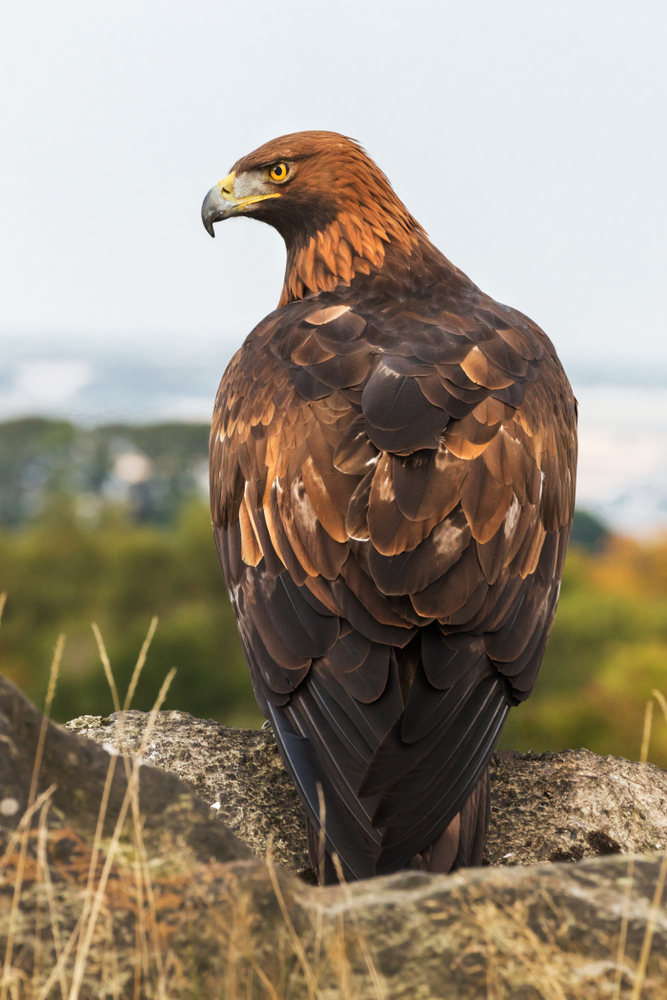
Puffin
Puffins congregate in large numbers at clifftop breeding sites along our rugged Caithness coastline. Join us for a birding holiday between April and July. During this time, the cliffs are alive with activity as these charming seabirds, easily recognizable by their striking black and white plumage, gather to breed. Enjoy watching them in action with their spectacular dive skills and remarkable agility. The Caithness cliffs provide a perfect backdrop for these birds, offering a safe haven from predators and a rich source of food from the surrounding sea.
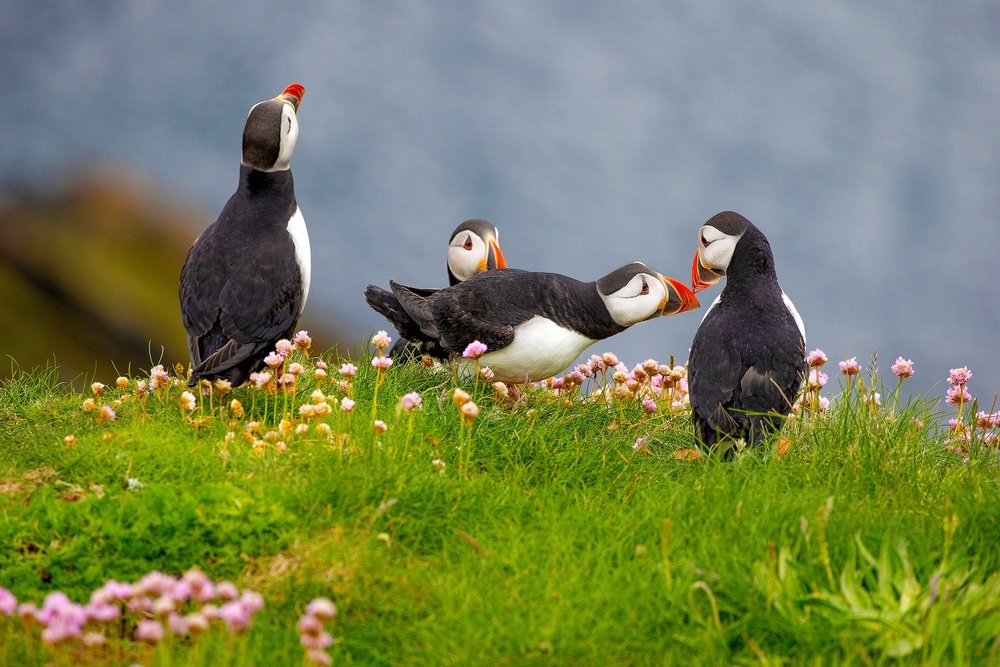
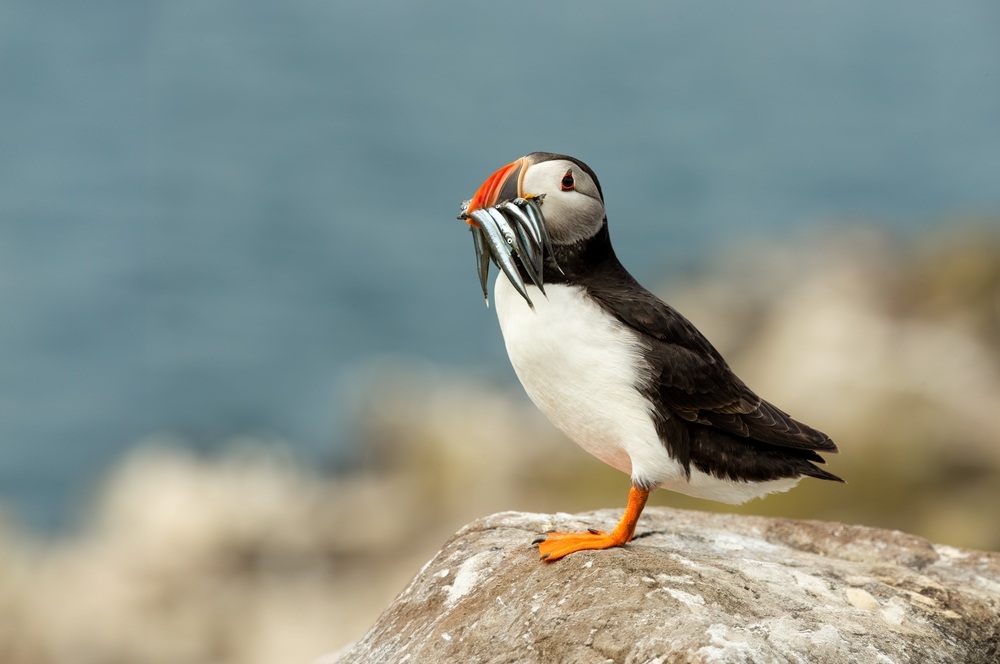
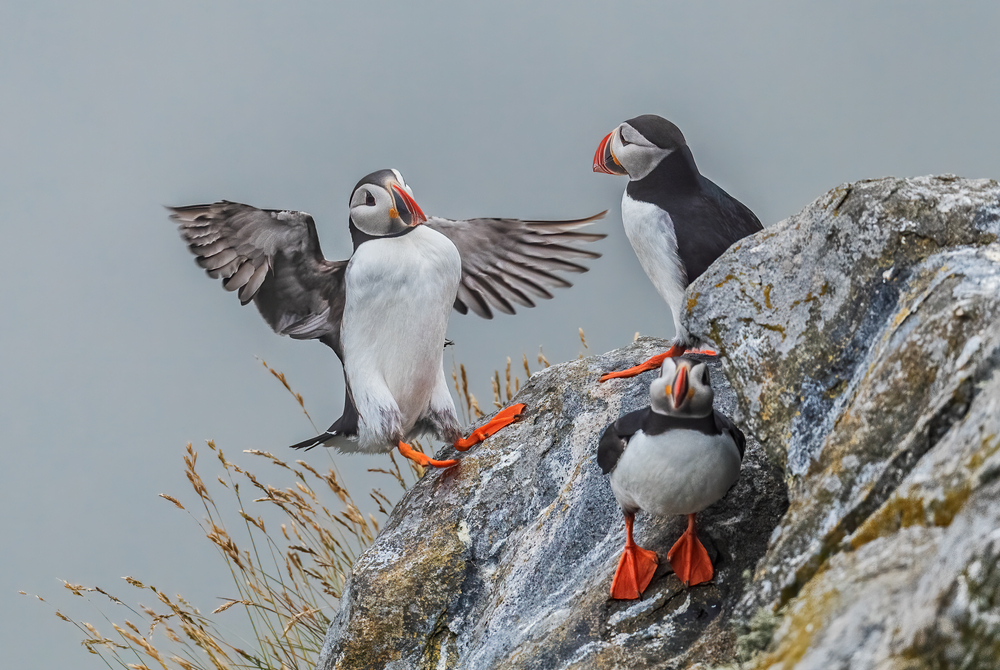
Barn owl
Did you know that Caithness is believed to have the most northerly barn owls in the world? And now you can enjoy them on a birding holiday with us. highlights just how special this region is for wildlife. These elegant, ghostly birds are mostly nocturnal, gliding silently through the dusk and darkness in search of prey, but in the long summer daylight hours of the far north, you might also spot them hunting during the day. Keep an eye out for their distinctive pale shape as they quarter over grasslands, fields, and roadside verges, especially in the quieter hours of early morning or late evening.
Guillemot
We enjoy spectacular guillemot along our Highland North coastline! Living on the rocky cliffs and sea stacks they come to breed from April to August. But you can enjoy them all year round. Commonly found along our Caithness coastline, on dramatic rocky cliffs and towering sea stacks. Here they gather in noisy colonies. These agile birds come ashore to breed from around April to August, nesting in tightly packed groups on narrow cliff ledges, often side by side with razorbills and kittiwakes. Whilst spring and summer are the core birding months for guillemots in Caithness, you can spot them sometimes offshore throughout the year, diving with ease beneath the waves in search of fish and other marine life. Their upright posture and chocolate-brown plumage make them a distinctive and rewarding sight for birdwatchers exploring the coast.
Razorbill
And if it’s Razorbills you want to watch on your bird watching holidays in Scotland, then you can enjoy them too along the Caithness coastline during the summer months. As close relatives of the Guillemot you can enjoy both on the same trip. As they come ashore to breed on the region’s steep cliffs and rocky ledges. Similar in shape and size to guillemots, you can distinguish them by their shorter, thicker beak marked with a distinctive white stripe, as well as their striking black-and-white plumage. From April to July, these elegant seabirds gather in busy colonies, often alongside guillemots and puffins, where they lay a single egg on bare rock ledges. Outside the breeding season, razorbills spend most of their lives at sea, making summer the best time to observe them up close as they dive for fish and tend to their young in this wild and beautiful part of Scotland.
Whooper swan
Looking for a winter birding holiday in Scotland? In winter, you can enjoy whooper swans. This is a large, graceful bird easily recognised by its striking black and yellow bill and elegant white plumage. Watch the graceful migratory swans in winter in Caithness. Arriving from their breeding grounds in Iceland to take refuge in our Highland sheltered lochs, wetlands, and flooded fields. Enjoy their loud, trumpeting ‘whooping’ call, often heard in flight or when gathered in groups. This is what gives them their name and adds a hauntingly beautiful soundtrack to the Caithness winter landscape. Often spotted feeding in small flocks alongside other wintering waterfowl, whooper swans are a majestic sight, especially against the backdrop of frost-covered moorland and low winter light.
Fulmar
The fulmar is a common Scottish seabird. They breed on the cliffs, but you can spot them offshore on the north coast all year round.
Buzzard
Buzzards are commonly spotted in the north of Scotland. You might see these medium-sized birds waiting in the trees for prey, mainly in woodland and moorland habitats.
Kittiwake
Kittiwakes are the only gulls to dive underwater in search of prey. Spotted in the summer breeding season, they are white and grey with black-tipped wings.
Osprey
This is a rare but exciting spot, found in Scotland over the summer. The osprey swoops into lochs to catch fish and grabs them out of the water.
White-tailed eagle
These amazing birds of prey soar over the rugged landscapes. The white-tailed eagle was discovered in Caithness last year, after almost 100 years!
Greenland white-footed goose
Greenland white-fronted geese winter in large numbers on the isle of Islay, but some also roost in Caithness, at Broubster Leans Nature Reserve and the Loch of Mey.
Our wee Halkirk hotel makes a great base for birdwatching breaks in Caithness. Book your stay at Ulbsster Arms Hotel today! Follow Caithness Birds for more birdwatching tips in our local area.

